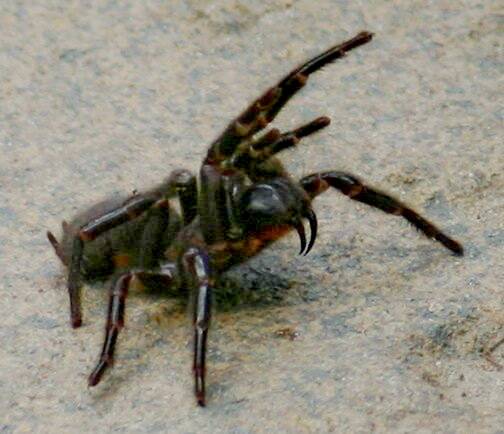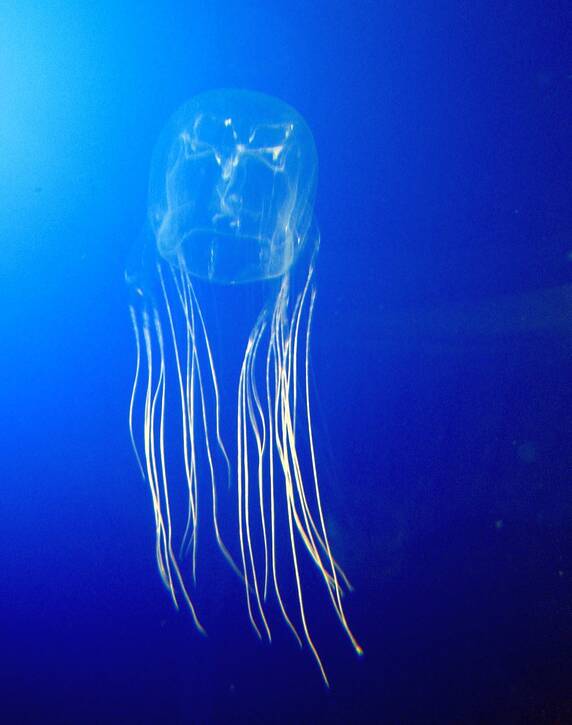The Seven Most Dangerous Animals in Australia
Australia is one of the most popular tourist destinations in the world. We mean, how could it not be? The country is blessed with a great climate, beautiful scenery and friendly people. However, that's not what it's most famous for. That distinction belongs to the nation's numerous dangerous and poisonous animals. The follow are just some of the most threatening.
Blue-Ringed Octopus

The blue-ringed octopus won't bother you if you don't bother it. The sea creature mostly hangs out at the bottom of the ocean, feeding on shrimp and crabs. However, if a human does have the misfortune of being stung by one, they are in serious trouble.
The sting from the blue-ringed octopus is dangerous because it contains a number of neurotoxins, including tetrodotoxin, which has the ability to paralyze humans until it's impossible to breathe. If CPR isn't administered within minutes, those who have been stung will die.
Bull Ant

In our opinion, there are few worse ways to die than being stung by a group of venomous ants. That was the fate of at least six people in Australia between 1980 and 2000.
The bull ant is not aggressive if run into while it's out foraging. However, if an individual gets too close to a nest, multiple ants can (and will) attack. For most, the stings will merely cause a mild-to-severe allergic reaction, but for the two to three percent of the population who are allergic to their venom, the stings could result in death within five to 20 minutes.
Saltwater Crocodile

Adult male saltwater crocodiles are huge, growing up to 20 feet long and weighing between 440 and 2,200 pounds. Unfortunately for those who come into contact with one, they have also shown a propensity to attack humans. Each year, Australia reports between one and two deaths from saltwater crocodiles, which are known to have the strongest bite of any living animal.
Between 1971 and 2013, there were 106 reported deaths in the country. Saltwater crocodiles are also responsible for a number of deaths in Africa. It's believed this is due to the fact that those living on the continent spend more time in contact with the predators.
Sydney Funnel-Web Spider

The Sydney funnel-web spider isn't all that big, ranging from 0.4 to two inches long. It's found mostly in Sydney and the surrounding area, hiding under wet logs and leaves. As with other arachnids, the females live longer.
Those who are unfortunate enough to be bit by the funnel-web spider are in danger and require immediate care. While most adults will survive the serious reaction that follows, the arachnid's venom is powerful enough to kill smaller children. It's tied with the Brazilian wandering spider as the most venomous spider in the world.
Box Jellyfish

Being stung by a jellyfish can be dangerous, especially if the sting came from a box jellyfish. While the species overall poses dangers to humans, the Australian box jellyfish, also known as the Chironex fleckeri, is the most dangerous of them all.
According to a recent study, the venom in one Australian box jellyfish is enough to kill 60 adult humans. Since the first recorded fatality in 1883, a total of 64 have occurred. On some occasions, swimmers stung by the box jelly die of drowning in the water after suffering a heart attack, which can be induced in as little as two minutes.
Stonefish

Australia seems to be home to the most dangerous variety of many different creatures - and fish are no exception. The synanceia, also known as the stonefish, is considered to be the most venomous fish in the world. Making it even more dangerous is the fact it can live outside water for up to 24 hours.
Australia has been the site of many stonefish bites, as the species' home is the Indo-Pacific. Anti-venom is used multiple times a year, and the only confirmed Australian death occurred in 1915. The most common way someone gets stung is to accidentally step on the sea creature, forcing its venom into their foot.
Textile Cone Snail

Anyone seeing the beautiful shell of the textile cone snail could be tempted to pick it up. The shells are usually brown or yellow and white, with a sheer gloss. Those who pick the sea creatures up, however, could get a rude awakening.
More from us:Canada's Mount Thor Is the Longest Vertical Drop In the World
The snail is among the most poisonous in the world. For most, the sting of a textile cone snail will result in the need for treatment. According to a 2004 study, around 30 people have died from a sting, and a teenager nearly passed away in 2021 after picking one up.





